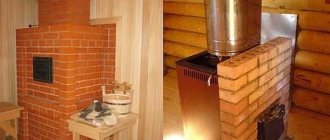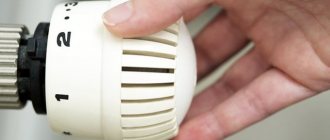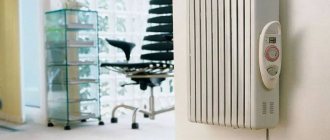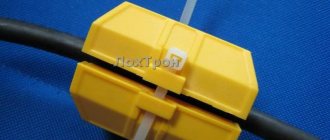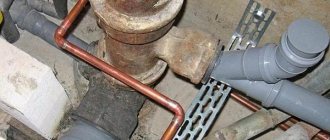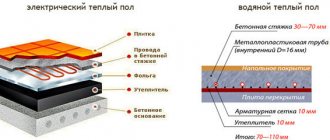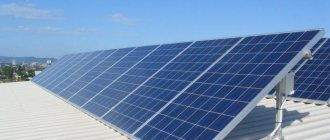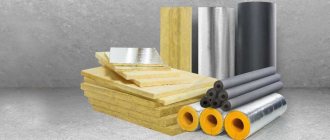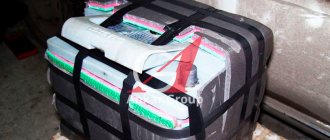Scope of application
Reflective thermal insulation is applicable to all surfaces without dirt and dust, suitable for complex structures with corners, bends and differences. Insulating walls from the outside can achieve maximum effect by creating an air gap of 20 mm on the foil side.
The material is effective for multi-story and single-story frame houses, and it will increase the resistance of the walls without increasing their volume. Installation is carried out end-to-end without overlaps, and the seams are taped with foil tape.
Application from inside
If you want to insulate the room from the inside, then there are two options. The first option is to make 2 air gaps between the external wall and the material, between the insulation and the cladding (for example, drywall). In this case, TIM with double foil is used.
The second option is to create one gap between the external wall and the insulation, for which material foiled on one side is used. The foil is turned indoors.
Roof insulation
Reflective TIMs mounted on the roof provide not only thermal but also vapor insulation. The under-roof space is also protected from moisture.
Reflective film is especially effective when insulating the ceiling of a bathhouse.
Piping and ventilation
Pipes require insulation with double-sided foil. If the pipes have a diameter less than 159 mm, then there is no need to create an air gap between the TIM and the pipe. If the pipes have a larger diameter, then a gap is required. The air gap is arranged as follows:
- The first option is to attach rings made of foil film to the pipe with a distance of 300-400 mm from each other. And on top of the rings the pipe is wrapped with insulation;
- the second option is to lay wooden blocks with a cross-section of 10 by 10 mm or 20 by 20 mm along the pipe, after which insulation is wrapped on top of them.
The joints must be sealed with aluminum tape. Insulating ventilation ducts will eliminate heat loss and provide sound insulation.
Application area
Insulation with a reflective layer is used to insulate the following structures:
- walls, ceilings, floors, doors;
- baths and saunas;
- attics, balconies, attics, roofs;
- air ducts, ventilation systems;
- containers;
- freezers and refrigerators;
- industrial equipment;
- car bodies and much more.
Foil insulation is not used for pouring into concrete screeds, since the components contained in the solution destroy aluminum foil.
Some of the most popular foil insulation materials are Porilex and Penofol.
- Porilex is a reflective insulation made of polyethylene foam, all cells of which are closed. This insulation has good sound and vapor insulation and a low thermal conductivity coefficient - 0.04 W/m K. Porilex is easy to cut with a knife and is resistant to oils and gasoline. It is necessary to leave a gap of 1-1.5 cm between it and the facing material.
- The NPE-LF type A series is used for walls, ceilings and roofs in private houses or other residential premises (for baths), behind radiators, ventilation systems, industrial equipment and so on. Available in thicknesses from 3 to 20 mm, width 120 cm, length from 10 to 25 m. Operating temperature of thermal insulation - from -40 to +90 ° C, flammability group - G4.
- Porilex type B has similar characteristics, but has a double-sided aluminum foil finish. Produced in thicknesses from 3 to 10 mm. Type C has one foil side and the other self-adhesive. Unlike the previous two types, it is produced in rolls of smaller width - 60 cm and with a length of 10 to 30 m.
- Penofol is produced in the same types A, B, C, but its thermal conductivity coefficient is slightly higher - 0.049 W/m K. Produced in rolls, it is best to use it only indoors.
A truly working legal way to save money. Everyone needs to know this!
“It felt so nice and warm in the house after insulating the floors with reflective insulation. It was not in vain that we decided to choose and purchase this particular material. We bought Penofol type C, self-adhesive. As a result, the entire repair went quickly and without problems. It is very convenient to glue and holds well. By the way, walking on the floor has become more pleasant and softer. They put linoleum on top of the insulation.”
Mikhail Sviridov, Moscow.
“We decided to choose reflective insulation because of a lot of positive feedback from neighbors. In the first winter after installing the water heater, we noticed that in the utility room where it was located, some places began to freeze quite heavily. Therefore, we decided that we needed to insulate it. The walls, ceiling and floor were finished. With the onset of winter, we immediately noticed a difference; it became much better and warmer in the utility room. Now we don’t worry about the pipes freezing.”
Kirill, Moscow region.
“We used Porilex to insulate the floors throughout the whole house. It was covered with linoleum in some rooms and parquet in others. I can say for sure: the floor has become noticeably warmer, and it is more pleasant to walk on it, since it has become softer. There is also less noise when walking now. The insulation was taken on a self-adhesive basis so that the repair could be completed faster and easier. In general, we are pleased with the result and recommend it.”
Table with prices at which you can buy reflective foil thermal insulation of different brands:
Reflective insulation significantly reduces heat loss from a building, thereby reducing heating costs and the amount of fuel required. Before choosing a material, you should check the quality certificates, since some manufacturers spray a thin layer of ordinary metal onto the surface of the insulation instead of aluminum foil. Such thermal insulation, judging by the reviews of professional builders, has significantly lower thermal insulation characteristics and its service life is also shorter. If a roll of insulation is priced too low, then most likely it is a fake.
Thermal insulation produced by Asstratek is represented by composite suspensions on a polymer basis.
When selecting adhesive for foam plastic, many factors are taken into account: in addition to the mandatory ones.
Glass wool insulation is a heat-insulating mineral wool material consisting of.
Installing a heat-reflecting screen behind the battery
In the context of constantly rising prices for energy sources, the issue of saving is especially relevant. Heating pipes are usually mounted on walls under windows. In these places, heat loss increases. If the radiator is installed in a niche, the power required for heating is even higher due to the reduced wall thickness. The best solution in this case would be a heat-reflecting screen behind the radiator. It isolates the wall area from the heating device and keeps the house warm.
Operating principle and design features
Various materials are used in the production of heat-reflecting screens. Their main property is a low level of thermal conductivity. First of all, these include:
Porilex can be used for thermal insulation
Also, all screens have a layer of insulation. Sealing is achieved using metallized tape. The thermal conductivity coefficient should not exceed 0.05 W/m*°C. There should be a layer between the foil and the wall that will retain heat. When creating heat-reflecting screens, rolled foam can be used.
Due to its low cost, polyethylene foam is most often used. It is installed with the foil facing the pipes and the insulated side facing the walls. It is best if there is a layer of air under the screen, which will increase heating in the room.
Screens can be used not only as an energy-saving mechanism, but also for thermal protection of furnaces
This is especially important for finishing steam rooms and saunas. The stove is a source of increased fire hazard, so it is important to insulate the walls from excessive overheating
Basalt cardboard is used for thermal protection of furnaces
For such screens, stainless steel and mineralite are used. In accordance with the standards, they are manufactured in several sizes, the edges must be curved at a certain degree, and there must be a natural non-flammable material inside. Usually basalt cardboard is used for this purpose. The heat-reflecting screen is attached behind the stove and on the ceiling. Minerite is installed in two layers. This reduces the distance from the protected surface to the oven.
Front screens in bathhouses began to successfully replace brickwork. In addition, with their help, the temperature rises and adjacent rooms are heated. The thickness of the steel sheet must be at least 0.8mm. A special silicone paint can be used to cover the screens. They are usually assembled from hollow box-shaped elements. There must be a thermal gap between the oven and the screen. Ceramic bushings can be used for fixation.
Aluminum foil is installed under the wooden covering on the walls in the steam room for thermal insulation and increased safety in the room. Next, the lining is installed. The joints between the layers are taped. Aluminum-bitumen tape is used to seal the seams. Convection screens can be used if the temperature of the outer walls of the oven does not exceed 400 o C.
Screens also reduce the effect of wood decomposition in baths and saunas, thanks to protection from wet steam and intense heat. The installation must be carried out strictly opposite the radiation from the stove stones.
Installation features
The screen allows you to retain heat behind the cast iron radiator and pipes. This is where the greatest losses occur. The use of energy-saving installations makes it possible to save up to 10% of heat when heating a room. Thermal resistance increases, the heat from the radiator and pipes remains in the room. During installation, it should be taken into account that the size of the material used must be larger than the radiator.
It is important to pay attention to the location of the battery. If the pipe is in a niche, the thermal insulation layer needs to be thicker
You should also not forget about the type of radiator connection during installation. It can be produced in a one-sided pattern or diagonally. In order to check the material, it is enough to set it on fire - the foil will not melt.
Heat shields for batteries can be attached using a staple gun. In addition to retaining heat, they also protect the walls from moisture penetration. You can install it yourself; you don’t need specialized knowledge; the manufacturer’s instructions are sufficient.
Heat-reflecting screens behind radiators and pipes can be used in residential buildings, country cottages, office and industrial buildings, children's institutions and hospitals. Technically simple installation makes it possible to save energy on heating pipes, protect walls from intense heat in saunas and avoid mold.
Installing a foil screen
Before purchasing foil insulation, make sure its thickness is at least 5 mm. Be sure to take a screen with a metallized aluminum coating, other surfaces will not work. The wall behind the radiator must be level and must be cleaned first. Handle the sheets very carefully to avoid scratching or damaging the foil. In many cases, holes will still have to be made, but if you can do without them, so much the better.
Tools and materials: cassette knife, tape measure, building level, dowels and screws, drill, adjustable wrench.
Principle of operation
To understand the principle of operation of such insulation, consider the main methods of transferring heat from one coating to another:
- thermal conductivity - the ability to conduct heat (solids);
- convection - heat transfer through the air due to different densities of cold and warm air currents;
- radiation - any body with a temperature above zero emits heat waves, which are absorbed by walls and ceilings (surfaces), converted into heat and transferred to the cold external environment. This exchange accounts for about 60-90% of heat loss.
Thus, heat loss is inevitable. It turns out that to create the effect of thermal insulation, it is necessary to minimize heat loss from radiation. But traditional TIMs are not able to protect a building from this type of heat transfer. And the optimal material was found - foil insulation, known for its reflective and low-emissivity properties.
Reflective thermal insulation works across all heat transfer processes: radiation, convection and conduction, inhibiting heat loss.
Is it worth the candle: pros and cons of installing a screen
On forums dedicated to home heating issues, there is a constant debate between supporters and opponents of installing reflective screens behind radiators. Some participants in such debates say that screens provide a real increase in temperature and savings in heating costs. Representatives of the other camp are confident that screens have more of a psychological effect.
| Pros | Cons |
| The cost of a reflector (if you do the installation yourself) is low. With the cost of a roll of insulation being 18 sq. m 1.5 thousand rub. You can equip an entire house with screens for 2–3 thousand rubles. | Due to the low efficiency of the screen, the cost of creating it is money thrown away. |
| It’s easy to build a screen; a person without special skills can handle it. | If you do not understand what and how to do, you can disrupt the air flow and reduce the efficiency of the heating radiator. |
| The screen saves 5–7% of the energy emitted by the radiator. | The screen only protects 5% of the external wall of the room. Through the rest of the area, not protected by a reflector, the street is still heated. |
| The temperature in a room equipped with a heat reflector will be 2–3 °C higher, all other things being equal. | Often there is no objective evidence of savings, and all talk about effectiveness is based on the “placebo effect.” |
Taking into account the ratio of the costs of making a screen and the cost of paying gas bills for a boiler in a cottage, the option of creating reflectors behind the batteries seemed promising to me. Therefore, I decided to spend money on one roll of insulating material, make screens in one or two rooms, and then evaluate the effectiveness of the idea.
Installation of films behind radiators is a simple sequence of actions
From a technological point of view, the foil behind the heating battery is installed without any difficulties. You will complete all the work efficiently and quickly if you listen to some advice.
First, don't buy matte metallic material. Use only polished foil.
Second, don't buy double-sided films. One air gap is quite enough to ensure high-quality heat reflection.
Thirdly, leave a gap of about 1.5–2 cm on both sides of the insulator layer. It is necessary to obtain the optimal thermal resistance of the reflector (1.15 sq.m*°C/W).
Prepare liquid nails or standard adhesive used for installing wallpaper, as well as directly reflective foil, and proceed to install it. The procedure is as follows. First, carefully measure the dimensions of the wall areas where you plan to install the screen or niches.
The parameters of the film must correspond to the projection of the heating radiator onto the wall. Add about 10% to the result obtained. In this case, the heat-reflecting potential of the foil will be slightly greater. Some masters say that extra centimeters are not needed.
The effect from them will be insignificant, but the edges of the screen sticking out from behind the radiator will greatly spoil the aesthetics of the room. See for yourself, choose the option that suits you personally.
Then make sure that there is a gap of at least 1.5 cm between the heating device and the film that you will mount. When there is not enough free space, you will have to adjust the radiator suspension to provide the missing centimeters.
Next, remove the radiator. Mark the places where its mounting brackets are located. Dismantle them. Inspect the brick or concrete masonry of the wall surface.
If there are gaps, cracks, or other defects, plaster them (or putty). Level the wall, glue the screen (coat its back side with wallpaper or polymer composition).
Instead of glue, as noted, it is allowed to use liquid nails. In some cases, it is permissible to use staples or small nails to secure the foil (if they fit into the wall material without any problems and are firmly held in it). Carefully return the pendants to their place and install the battery.
Additionally, we will give some useful recommendations to home craftsmen who are installing heat-reflecting products for the first time. If during installation of the screen you damage its outer covering, the cut site can be masked with LAMS or LAS films.
They are made of foil and do not reduce the efficiency of heat reflection. Don't try to find screens that are too thick. Practice shows that five centimeters is enough to effectively save heat in the house.
Recommendations for the installation process
- Installing a heat-reflecting screen behind the battery is technologically simple, but will be done faster and better if you take into account the following practical recommendations:
- the maximum effect when using penofol and similar materials is achieved if there is an air gap of 15-20 mm on both sides of the insulating layer. In this case, the thermal resistance of the insulating structure is achieved up to 1.1-1.2 (m∙°C)/W. Installation is carried out on wooden slats, and penofol must be double-sided foil (type B);
- in most cases, to create a reflective screen for batteries, one air gap is enough - between the radiator and the insulating material. Double-sided foiling is not necessary in this case;
- When choosing a reflector, it should be taken into account that the foil must be polished (not matte).
Glass screen
To make a screen in the form of a stained glass panel, tempered glass is used, the thickness of which does not exceed 8 mm. Glass screen looks amazing in rooms
with an elegant interior and can become the central decorative element in the room. The product is absolutely safe, given the technology of its manufacture. Stained glass is laminated to protect the surface from scratches and chips. The corners are processed using a special method, eliminating the possibility of injury. It is almost impossible to break such glass.
A more economical alternative to a glass screen is an acrylic screen or a triplex screen (formed by layering glass bonded with a polymer composition). Stained glass windows made of acrylic are thicker than glass, but weigh less. Products made from this material come in a variety of colors.
There are many ways to process and decorate stained glass panels. Here are some of them:
- Photo printing. This technique allows you to transform a boring panel into a canvas with original images or photographs. This technique can surprise.
- Firing a design created with silicate paints. The firing procedure is performed at high temperatures in a polymerization oven, which significantly increases the strength of the product.
- A combination of artistic techniques and sandblasting. This method produces amazing and unique images.
- Fusing. The method involves laying out a mosaic of glass elements, followed by their polymerization.
- Tiffany. Technology for creating a three-dimensional pattern using a glass cutter, copper film, lead-tin solder and platinum. Incredible results also require significant investment.
- Bending. Forming glass by heating to high temperatures. Allows you to create products of unusual shape and texture.
- Matting or etching. Patterns or designs are applied to glass by scratching.
- The facet processing method involves creating a cut for a screen from a metal profile or simulating a cut using rhinestones.
- Covering with self-adhesive lead film. This screen is not cheap, but there is a huge selection of decor colors.
- Pouring glass. The method allows you to create the illusion of classic stained glass. Visually reminiscent of Tiffany style stained glass, but costs much less.
Reflectors for radiators Heating system
» Heating batteries
The heating system includes fasteners, thermostat pipes, an expansion tank, air vents, batteries, collectors, a boiler connection system, and pressure-increasing pumps.
On this page we will try to find and select certain installation components for the desired dacha. Installation of heating a dacha has different elements. All installation elements are very important.
Therefore, the choice of parts of the structure must be done technically correctly.
Reflectors for radiators
Battery reflectors are an energy-saving technology available to any resident of a city apartment. Already now, such brilliant battery reflectors can be seen in Kyiv hospitals, schools and kindergartens.
They return heat from the radiators to the apartments, which is uselessly lost into the wall closest to them.
The foil installed under the battery acts like a thermos - heat is reflected from such surfaces like the sun's rays from a mirror.
The Russian-made material is called “Penofol”, the Ukrainian one is called “Aluf”, there are also a lot of imported reflectors. The basis of the material is aluminum foil, which is attached to a soft foam material with a thickness of 2 to 10 mm.
Head Department of Building Physics and Resource Saving of the Research Institute of Building Structures Gennady Farenyuk told how to best choose a reflector:
— Thanks to Penofol or Alufom, it is possible to save about 5% of room heat (about 1 “extra” degree). Believe me, this is a lot! In 1993, I received a patent specifically for the idea of preserving heat in apartments using this foil material, and now it is installed in several hundred schools as part of an energy saving program.
Ready-made reflectors are not sold in stores, but they are easy to make yourself - you need to buy special material at the market or in a store and cut pieces of suitable size.
“It must be metal foil,” the physicist advised, “it reflects heat better.” Aluminum coating on a lavsan base works much worse. Checking whether it is foil or not is very simple - you need to set the edge of the material on fire with a lighter. If it doesn't melt, it's foil.
The price of a heat reflector depends on the thickness. The material is sold at construction markets and supermarkets.
Removing and preventing the formation of air pockets in the heating system.
One of the main reasons for the deterioration of heating, and sometimes its absence, is the formation of air jams in the heating system of buildings. This causes consumer indignation towards heat supply organizations, sometimes groundless, because At that time, the source of thermal energy was the boiler room, operating in normal mode.
The first reason is that water itself contains dissolved air. If the water heats up, air begins to be released in the form of bubbles that rise to the uppermost sections of the pipelines. It is there that, accumulating, they create air jams.
The second reason is that when the pressure in the heating system decreases or changes, it is partially emptied, and all the resulting voids represent air pockets.
The third reason is that leaks from pipelines also contribute to the “airing” of the system as a whole.
The fourth reason is the repair of the piping system and subsequent assembly. There is no way to avoid the possibility of “airing”.
Practice shows that air most often collects in heating devices installed on the upper floors.
In such cases, at the upper points of the heating system, air is removed through special devices - Mayevsky taps.
Mayevsky crane
When searching for the location of an air lock, tap the pipes and heating devices with a light hammer. Where air pockets are located, the sound becomes stronger and louder.
Air locks can form in places where pipelines are kinked. Therefore, when installing the system, it is necessary to observe the magnitude and direction of the slopes of the distribution pipelines.
Air locks are eliminated by opening the air bleed valves until all air is removed from the system. This method of removing air is repeated several times, especially on contaminated systems.
The news uses materials from the magazine “Miske Gospodarstvo of Ukraine”
DIY screen for a heating battery
Today, few people can be surprised by design solutions for the design of heating radiators.
Much less common are ordinary, unadorned and undesigned radiators. The main decorative techniques are creative painting or a screen - an aesthetic coating that does not interfere with the movement of warm air. And if you learned about painting radiators and choosing odorless paint in our previous article, then here we will talk about how to make a screen for a heating radiator with your own hands, with detailed photos and video instructions. How? Read on. In addition to the fact that the screen performs a decorative function, one cannot fail to mention its rich functionality. On the one hand, it prevents dust from accumulating in sections of the radiator, where it is very difficult to reach. On the other hand, it protects children from injuries and burns. Some craftsmen manage to turn ordinary screens into transforming tables that recline when necessary. Often small hooks are installed on such screens, which allows you to dry clothes in winter.
Important! A properly made screen does not interfere with the movement of warm air from the radiator. It is noteworthy that such a decorative element can cover any type of radiator
Although some of them, for example, design radiators, are exclusive in themselves, so they do not need additional decor. You can learn about such radiators in our article “Steel heating radiators"
It is noteworthy that such a decorative element can cover any type of radiator. Although some of them, for example, design radiators, are exclusive in themselves, so they do not need additional decor. You can learn about such radiators in our article “Steel heating radiators”.
Operating principle
If the insulation is foiled, it acquires an increased ability to repel condensation and retain heat, and each layer in it is responsible for certain functions:
- The first layer of material consists of glass, mineral fibers, foamed polyethylene, expanded polystyrene, which does not allow heat to go anywhere. It tends to reflect waves into the home, creating a favorable microclimate for living.
- The second is 7-15 mm foil, which can reflect the heat flow as much as possible. According to the laws of physics, the material, if foiled, accumulates up to 90-95% of thermal energy, the remaining 5-10% is retained by polyethylene fiber.
- The production process is simple: metal is soldered onto the material, joining it into a single whole, after which it gains the ability to reflect the body.
- Thermal insulation is available on one or two sides, which determines the range of uses. Insulation, in which one layer is aluminum, is used to insulate the inside of the room. If you foil the material on both sides, it can be used to insulate refrigeration units, heating mains, industrial buildings, and factory lines.
Basic performance qualities
Manufacturers strive to provide screens with three categories of performance properties. First of all, it is heat resistance. This quality not only means that high temperature waves will not spread beyond the barrier, but also eliminates the risk of destructive effects on the material from which the heat shield and its filler are made. The second category represents mechanical protective properties, the presence of which guarantees that the material will not be damaged, in addition to heat, by physical influences. For example, the same metal is resistant to accidental impacts and cuts. The third group of properties assumes the presence of other insulating properties. This could be, for example, a vapor barrier or a noise reduction function.
Application nuances
When choosing thermal insulation, it is worth remembering that not everyone can reflect heat. In order for the indicator to be maximum, the foil must be thick enough. Most often, the insulation, its basis, is extruded polyethylene with a thick aluminum layer that retains maximum thermal energy. These include insulation materials Teplofol, Penofol, Alufol, and others.
Teplofol
Sheathing that can reflect is available in the form of mats, rolls, and pipe cylinders. If it is manufactured using testing technology, the thermal resistance characteristics must be indicated in the accompanying documents. If you foil the material, its range of applications will expand indefinitely. It's ideal for
For interior work, metallized polyethylene material, which is capable of reflecting heat, is ideal. When installing, you will need to leave a distance between the sheathing and the wall for ventilation. This will preserve the material and prevent moisture accumulation and mold growth. If this is external thermal insulation, you should choose mineral wool or polyethylene with metal
When laying, it is important that the material is joined, the cracks are taped with special tape. When the ceiling is insulated, mineral wool is used, a layer of air between it and the finish. To create such a structure, a sheathing of wooden blocks is installed, and a metal profile is also used.
For heating networks and small-diameter water mains, insulation without an air gap will be indispensable. If the pipe is large in diameter, a cushion between it and the casing is required; an exception to the rule is foiled mineral wool. When pipeline insulation is made of polyethylene, it is desirable that it be foil-coated on both sides. In order for heating radiators to operate at full capacity, they use a material that can effectively reflect heat. Cut the sheet to the size of the battery, place it between the wall and the heating device, the foil should be directed towards the room. Insulation is easy to install, but guarantees high efficiency of heaters, batteries, air heaters, increasing it by 30-35%.
battery thermal insulation
Characteristics of protective screens
When choosing a screen, you should mainly rely on the ability of the material to provide the above-mentioned heat resistance. The indicator of resistance to specific temperatures is a basic characteristic. Thus, tungsten panels can withstand temperatures of 3300 °C, but as this indicator increases, the melting process begins. In turn, molybdenum copes with its function at a temperature of about 2610 °C. But it should be remembered that peak temperatures are not at all a recommendation for use in such conditions. For example, manufacturers recommend using the same tungsten with molybdenum under conditions of 1300-1400 °C. In addition, the choice also takes into account the dimensions of the heat shield in a particular modification. They can be 100-150 cm in height, 50 cm in width, and rarely exceed 10 cm in depth.
The appearance of an unpleasant odor and secreted substances
Such grilles are not always made from environmentally friendly substances, so during the heating season, when they heat up, they emit an unpleasant odor, as well as toxic substances into the air, which negatively affects the health of people and pets living in such an apartment.
And if the owners decide to cover the heating devices with similar screens, then it is better to choose similar grilles made of glass or wood.
Installation nuances
There are different installation methods, which are determined by the design of the screen itself and the installation conditions. The most reliable method involves the initial installation of frames, onto which the screen is subsequently mounted or secured using brackets or self-tapping screws. It is important to take into account the possibility of future dismantling of the structure. This is especially true for window thermal barriers, which are used only in winter. Again, a protective heat shield for a car provides the most affordable installation method. Typically, manufacturers provide holes in metal sheets and include kits with hardware for fixing the product. Another thing is that the installation location itself near the same collector must correspond to the screen configuration.
DUST-STOP protective curtain – AN IDEA for comfortable, dust-free window installation
DUST-PROOF - the dust-proof curtain is a new product on the window market, because this invention of the IDEA company has recently been tested and patented. The use of dust curtains allows you to protect the interior of the apartment from dust and dirt during installation. The buyer does not need to spend the whole evening “packing” the apartment in plastic films and bags; the window company will do everything cleanly, and the apartment will not be subject to a “dust attack” at a distance of 2 meters from the window.
Correct installation of the inflatable dust curtain PYLESTOP will protect the apartment from dust during installation. When using this system, there is no need to drill the walls, there is no need to glue anything, the expensive interior of the apartment, wallpaper and furniture will not be damaged.
In addition to the benefits for the buyer, window companies receive additional income, because they can sell this service to clients. For example, one installation team does 4 window installations a day, the cost of this service is 500 rubles. The number of working days is 22. The company receives additional income per month from one installation team of 44,000 rubles. What if there are 20 or 150 brigades? This additional income can be used for employee motivation, advertising and other purposes.
